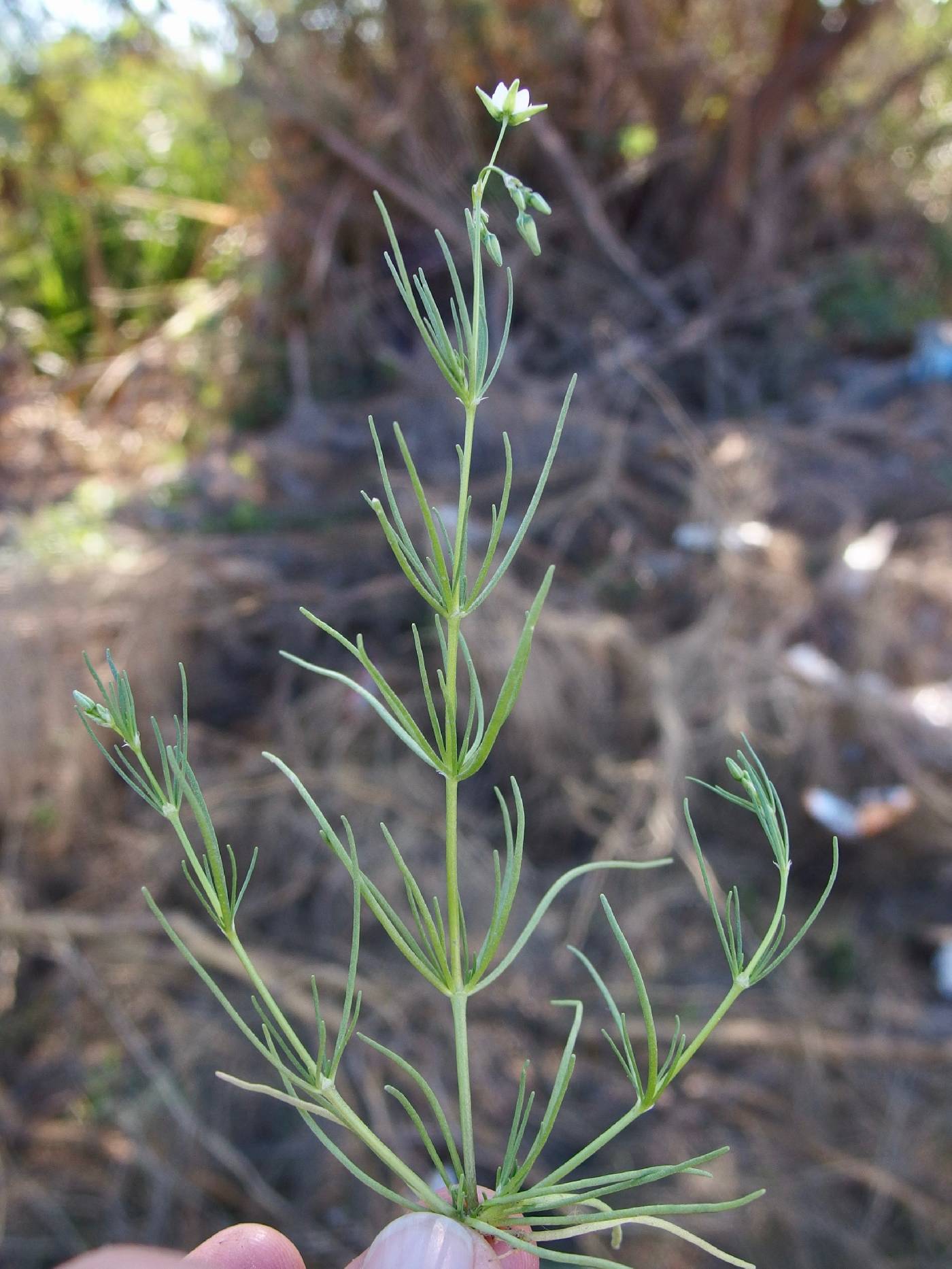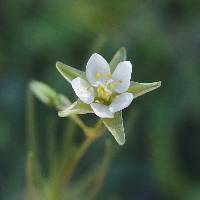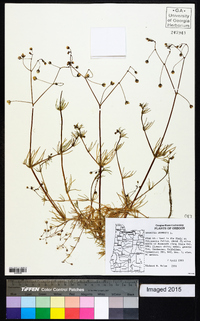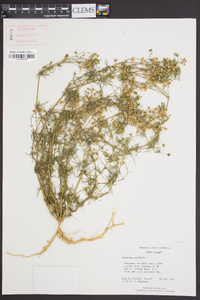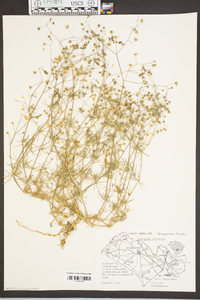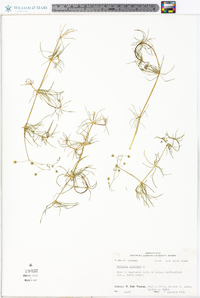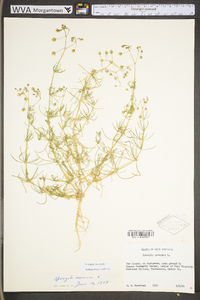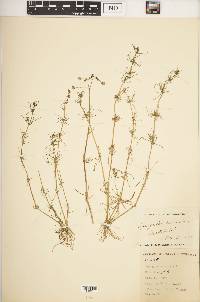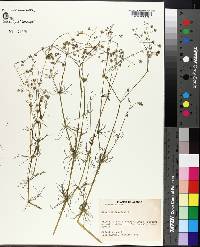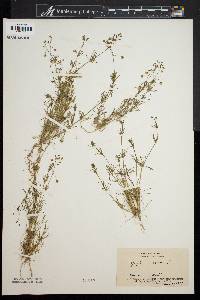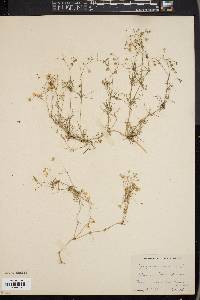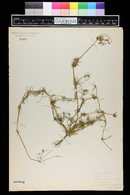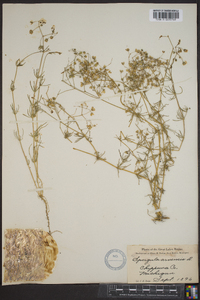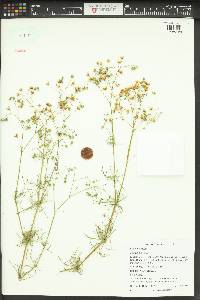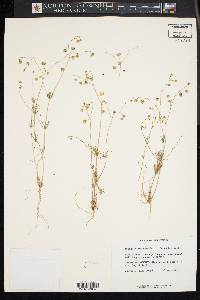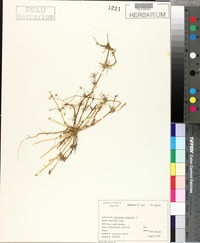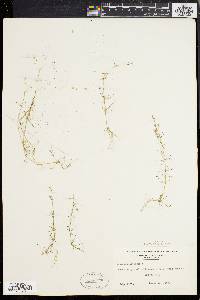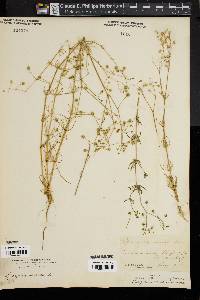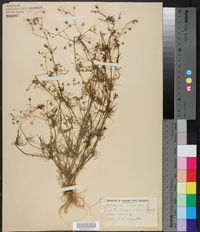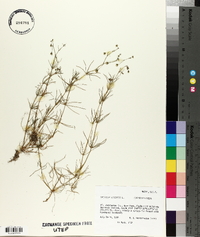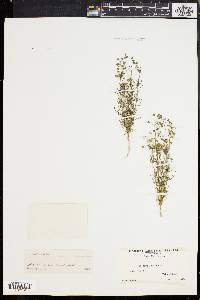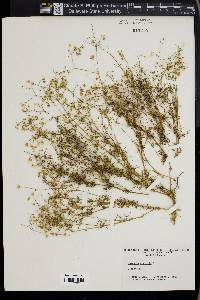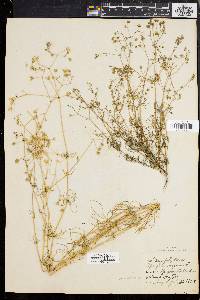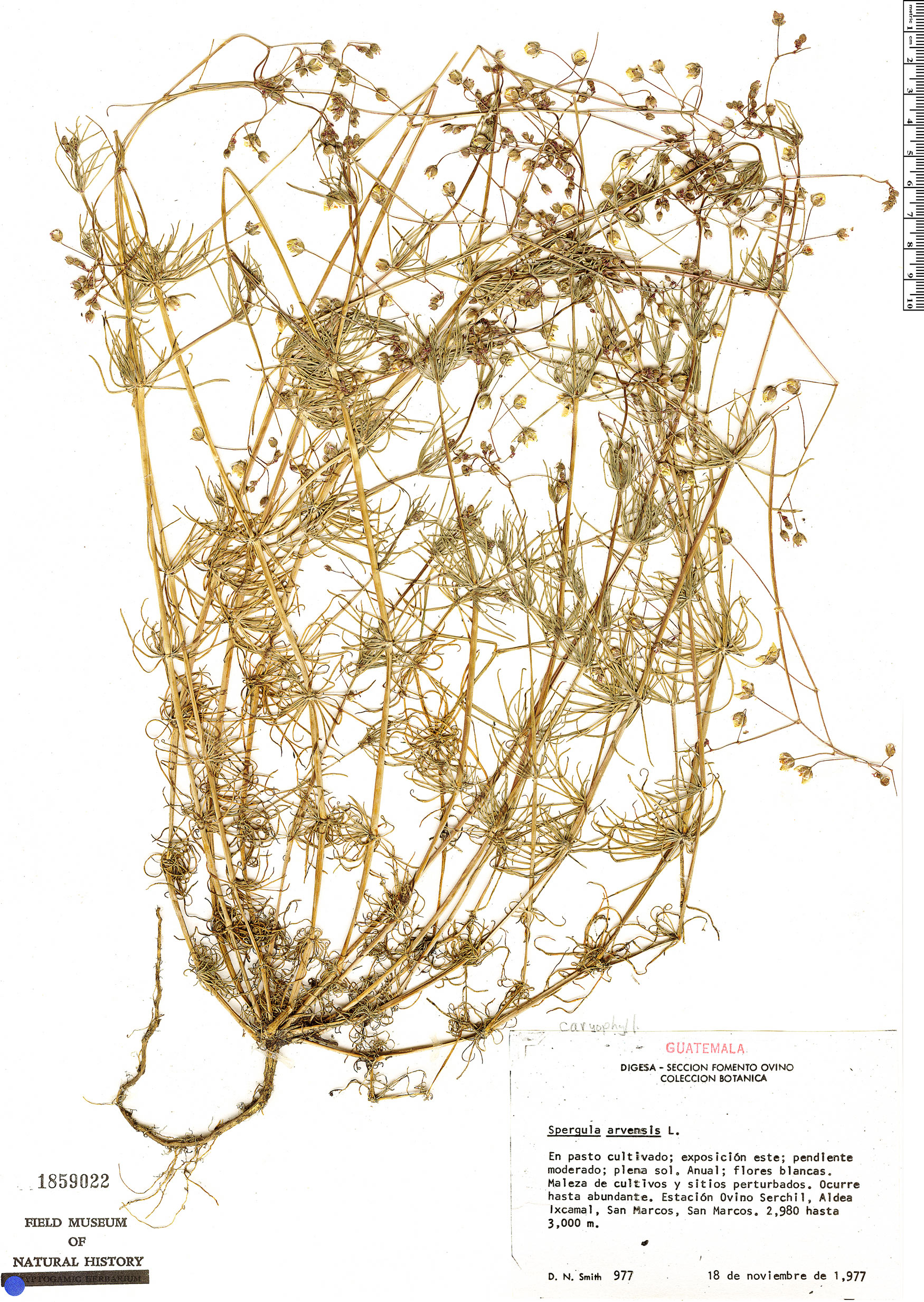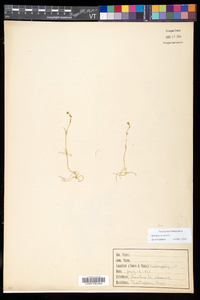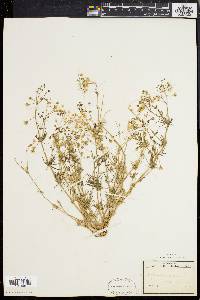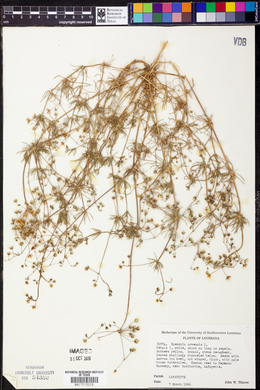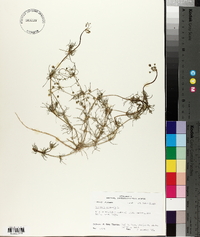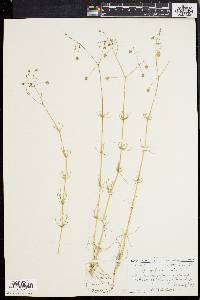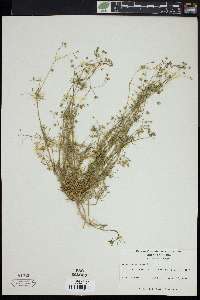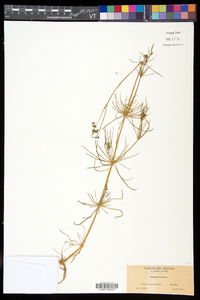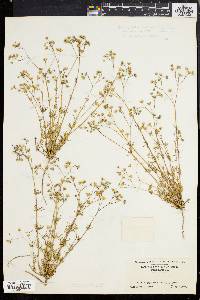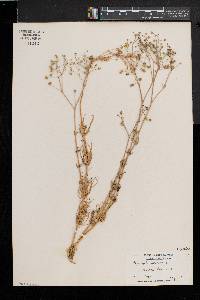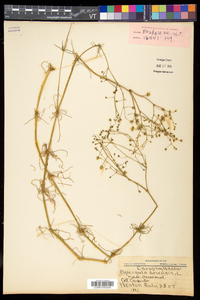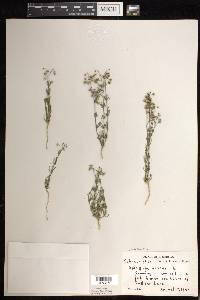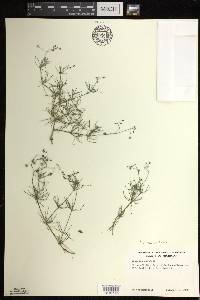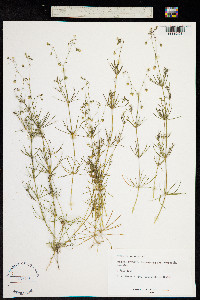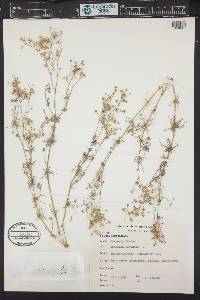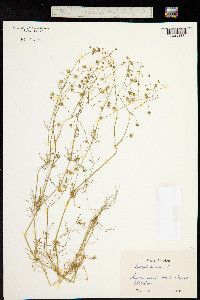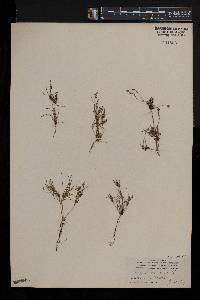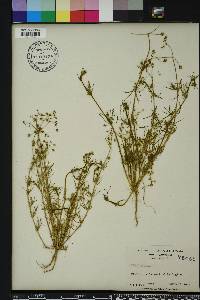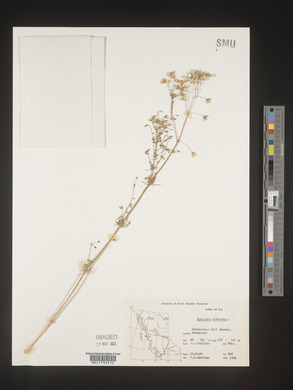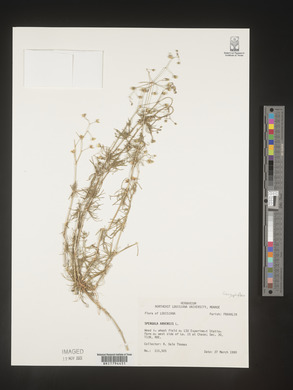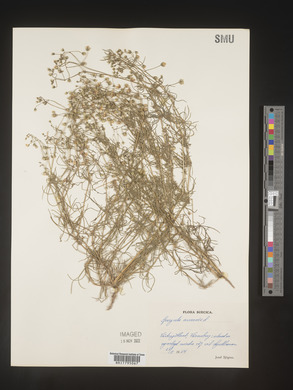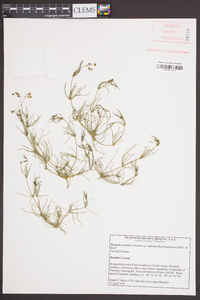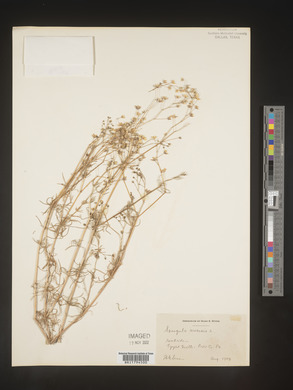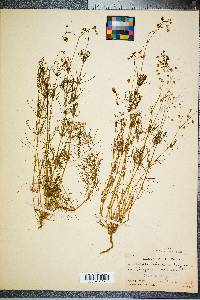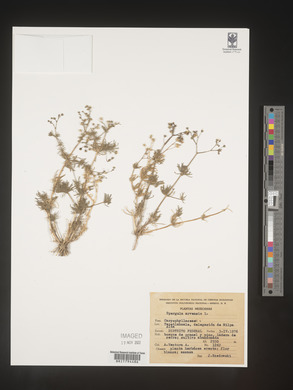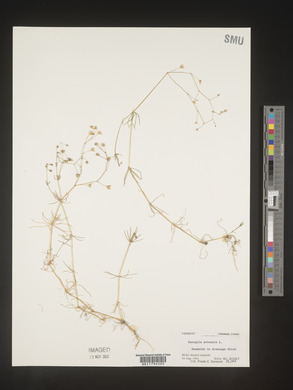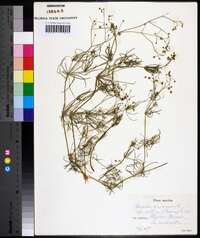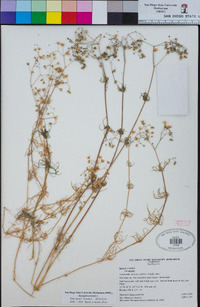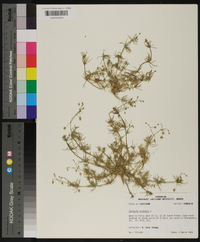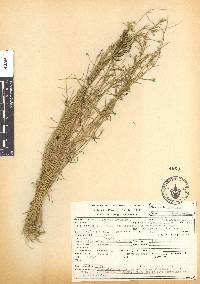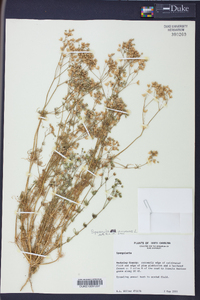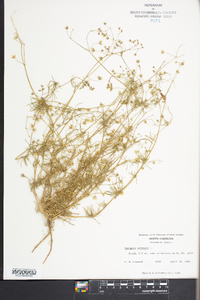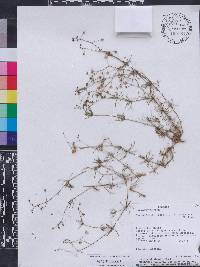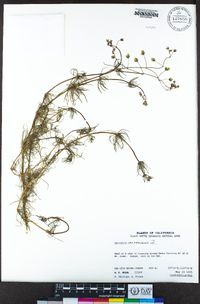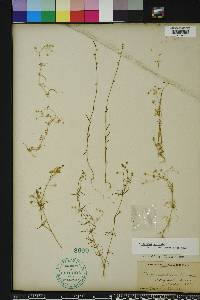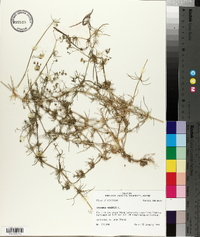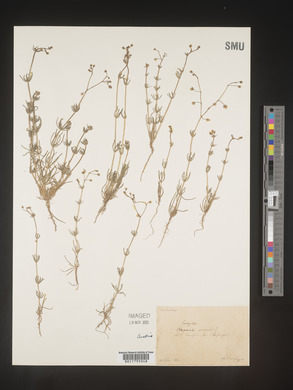
|
|
|
|
Family: Caryophyllaceae
Corn Spurry
[Spergula arvense, moreSpergula arvense var. arvense L., Spergula arvensis subsp. arvensis L., Spergula arvensis subsp. sativa , Spergula arvensis var. sativa (Boenn.) Mert. & W.D.J.Koch, Spergula sativa Boenn., Spergularia arvensis] |
Plants glabrous or, often, glan-dular. Stems usually branched proximally, 10-50+ cm. Leaf blades usually appearing terete, 1.5-3(-5) cm, margins often revolute, forming abaxial channel. Pedicels erect to ascending, reflexed, secund in fruit. Flowers: sepals 3.5-5 mm; petals ovate, 3/ 4-1 times as long as sepals in flower, apex obtuse; stamens usually 10. Capsule valves 3.5-5 mm. Seeds sometimes keeled or winged, subglobose, 1-1.1 mm wide, surface minutely roughened or obscurely low-tuberculate (50×), covered with white, club-shaped papillae in part or throughout (packing of seeds in capsule may prevent papillae development in spots), wings white, ± 0.1 mm wide. 2n = 18, 36 (both Europe). Flowering spring-early summer. Sandy roadsides, cultivated fields, other disturbed areas; 10-2000 m; introduced; Greenland; St. Pierre and Miquelon; Alta., B.C., N.B., Nfld. and Labr. (Nfld.), N.W.T., N.S., Ont., P.E.I., Que., Sask., Yukon; Ala., Alaska, Ark., Calif., Colo., Conn., Del., D.C., Fla., Ga., Idaho, Ill., Ind., Ky., La., Maine, Md., Mass., Mich., Minn., Miss., Mo., Mont., N.H., N.J., N.Y., N.C., Ohio, Oreg., Pa., R.I., S.C., Tex., Vt., Va., Wash., W.Va., Wis., Wyo.; Eurasia; introduced in Central America, South America, Asia (Korea), Africa, Australia. Spergula arvensis is often a significant weed in sandy crop lands, but it is sometimes used as a forage crop in areas with poor, sandy soils; it was intentionally introduced to Crawford County, Michigan, in 1888 (O. Clute and O. Palmer 1893). Historical collections are known also from Kansas, Nebraska, North Dakota, and South Dakota, where Spergula arvensis may have been introduced but apparently did not persist.
Annual herb with a taproot 10 cm - 0.5 m tall Stem: more or less regularly two-forked (dichotomous), smooth or glandular. Leaves: opposite, clustered at the nodes and appearing whorled, fused at the base, 1.5 - 5 cm long, narrowly linear to awl-shaped with a pointed tip, often appearing cylindrical, one-veined. Margins often down-curved, making the leaf look channeled beneath. Stipules four per node, white, small. Inflorescence: a terminal cluster (cyme) of flowers, subtended by tiny paired bracts. Flowers: white, hypanthium (a floral tube formed by the sepals and stamens) cup-shaped. Stalk upright to ascending, reflexed. Stamens usually ten, opposite sepals. Styles five. Sepals: five, distinct, silvery, 2 - 5 mm long, egg-shaped, scarious-margined (dry, thin, and membranous), glandular-hairy. Petals: five, white, egg-shaped with a blunt tip. Fruit: a dehiscent capsule, opening by five valves, longer than the sepals, egg-shaped. Valves 3.5 - 5 mm long. Seeds blackish, 1 - 1.5 mm long, nearly spherical, sometimes winged or keeled, membranous, covered with white bumps. Similar species: No information at this time. Flowering: July to September Habitat and ecology: Introduced from Europe. Rare in the Chicago Region. Has been seen in grain fields, lawns, and as a weed in nursery rows. Occurence in the Chicago region: non-native Etymology: Spergula comes from the Latin word spargo, meaning sow or scatter, referring to the discharge of seeds. Arvensis means "of cultivated or farmed land." Author: The Morton Arboretum Simple or much-branched annual to 40 cm, sparingly (seldom more copiously) glandular-pubescent; lvs 2-5 cm, narrowly linear or subulate, channelled beneath, clustered at the nodes in two opposite sets of 6-8, appearing verticillate; stipules small but evident; sep ovate, 2-3 mm, obtuse, glandular-puberulent; pet white, obovate, obtuse, shorter to longer than the sep; stamens 10 or sometimes 5; fr broadly ovoid, surpassing the sep; seed 1-1.5 mm, blackish, subglobose, minutely roughened,conspicuously white-papillate and white-margined or narrowly winged; 2n=18. Native of Europe, widespread as a weed in cult. ground and waste places; N.S. to Alas., s. to Fla. and Calif. May-Aug. (S. sativa) Gleason, Henry A. & Cronquist, Arthur J. 1991. Manual of vascular plants of northeastern United States and adjacent Canada. lxxv + 910 pp. ©The New York Botanical Garden. All rights reserved. Used by permission. |
|
|
|
This project was made possible in part by the Institute of Museum and Library Services [MG-70-19-0057-19].
Powered by Symbiota

